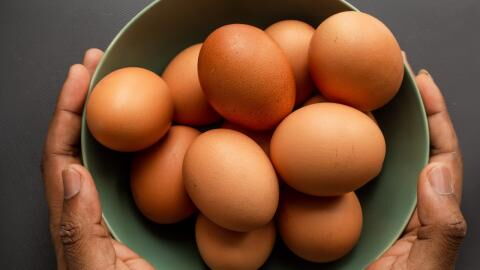The Da Vinci diet, or ‘diet code’ is a method that has been around for a long time. It was developed by Stephen Lanzalotta, a baker from Portland in the northwestern United States. In 2004, he told CBS News that he came up with the idea for the diet because he had lost half of his customers due to the craze for low-carbohydrate products.
Discover our latest podcast
To create the Da Vinci Diet, the baker drew inspiration from Dan Brown's book The Da Vinci Code to get consumers to eat bread again. An article in CBS News said:
He is neither a nutritionist nor an academic—he is trained in biology and biochemistry. But Lanzalotta says that people have been eating bread for too long for it to suddenly be the reason why everyone is getting fatter.
After developing this method, Stephen Lanzalotta wrote a book on the Da Vinci diet. This was published in 2006 and is entitled The Diet Code: Revolutionary Weight Loss Secrets from Da Vinci and the Golden Ratio. It contains recipes and tips to follow to the letter to successfully implement the Da Vinci Diet and achieve an ‘ideal’ dietary and physical balance.
What does the Da Vinci diet consist of?
The principle of the Da Vinci diet is to adopt a healthy and balanced diet in order to lose weight. To achieve this, this method is based on the ‘golden ratio,’ also known as the ‘divine proportion,’ so that the person who follows this diet can eat any type of food in the right quantities. This number, which corresponds to 1.618, is the value of a proportion. It is irrational like ‘pi.’
It has long fascinated philosophers, mathematicians, but also artists. This value, whose symbol is ‘phi’ (from the sculptor Phidias), is used in architecture but also in painting. The Italian painter Leonardo da Vinci used the ‘golden ratio’ to find the ideal proportions for his portraits, particularly in his work the Vitruvian Man.
As part of the Da Vinci diet, this number is used to calculate and define the so-called ‘ideal’ proportion of protein, carbohydrates, and fat for a healthy, balanced diet. Stephen Lanzalotta uses the ‘golden ratio’ to prepare his diet recipes.
There is no need to count calories as part of the ‘diet code.’ But great importance is attached to the balance of food intake. Quantified intakes are those of three nutrients: proteins, lipids, and carbohydrates. According to the American baker, the perfect proportions of each food are 52% carbohydrates, 20% protein, and 28% fat. The CBS News article said:
The Da Vinci diet consists of the foods consumed by the philosophers and artists of antiquity—fish, cheese, vegetables, meat, nuts, wine, and bread.
A study published in November 2018, in the Journal of the Pakistan Medical Association, specified that ‘fresh, high-fibre, vegetarian foods are the mainstay of the Da Vinci diet. Water and water-rich foods are recommended.’
What are the disadvantages of the Da Vinci diet?
According to dietician and nutritionist Elsa Orivel, the Da Vinci diet can be difficult to maintain over the long term because it is quite restrictive. Orivel explained:
It is easier to count calories or refer to a list of permitted and prohibited foods than to check the percentages for each food.
The nutritionist says that this can be possible but only if you follow the recipes in Stephen Lanzalotta's book to the letter or use an app that displays the nutritional composition of each food to obtain the said breakdown.
In this diet, the proportion of carbohydrates is higher than in usual diets. It could then be easier to follow for people who are unable to completely eliminate sugar from their diet, but this is not ‘wise,’ especially when you want to lose weight, according to the dietician. The dietician said:
The notion of total calories is forgotten here. However, the notion of distribution is important. But we also need to know whether this diet is suitable for any lifestyle or physical activity, for example. Without this information, this method is limited to the distribution of macronutrients.
Is it dangerous for one’s health?
Elsa Orivel considers that the ‘diet code’ is not a dangerous method because it is close to a balanced diet. The Da Vinci diet complies with official recommendations in terms of nutrition. And for good reason, since ‘the optimal range for fat intake is set at 35-40% of energy intake,’ for protein it is estimated at 10-20%, and for carbohydrates at 40-55%.
However, according to the dietician, this diet does not follow the recommendations usually given for current diets because the proportion of carbohydrates is high. In his book, Stephen Lanzalotta hammers home the fact that his diet does not advise banning sugars. In an excerpt from his book, it says:
You can indulge in sweets without fear of compromising your results. Yes, you can go against the dietary advice of the last few decades. Eat bread! Eat butter!
The nutritionist pointed out:
As part of the Da Vinci diet, one reduces fats and increases sugars. This corresponds to the opposite of low-sugar diets, which generally have a higher fat content.















